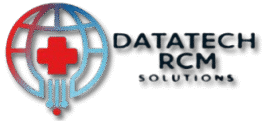The Problem:
A mid-sized healthcare provider recently faced an urgent situation — they had been flagged for multiple HIPAA violations related to their billing documentation during a third-party audit. These compliance breaches, though unintentional, posed a serious risk: potential fines, legal exposure, loss of patient trust, and even payer contract termination.
They needed immediate support to remediate risk, rebuild their compliance infrastructure, and pass a follow-up audit within 60 days — or risk operational and reputational damage.
That’s when they turned to Datatech RCM Solutions.
🚨 The Compliance Violations
Upon initial review of the audit report and system logs, our compliance team discovered a range of issues:
- Unsecured PHI stored in local folders and Excel spreadsheets
- Shared logins used by billing staff to access the EMR and PM system
- No audit trails to track claim edits or data modifications
- Unencrypted transmission of patient documents between departments
- Lack of a formal HIPAA training program for the billing team
- Missing BAAs (Business Associate Agreements) with some third-party tools
Individually, these might seem like oversights. But combined, they were enough to raise red flags with both the compliance auditor and payer networks.
🛠️ The Datatech Compliance Response
Our compliance and billing leadership teams launched a full-scale recovery and protection plan in under 72 hours. The process followed four core pillars:
✅ 1. Full Compliance Audit & Risk Assessment
- Conducted a gap analysis using the HHS HIPAA Compliance Checklist
- Reviewed all PHI access points — including PM software, email, document storage, and third-party tools
- Identified users with excessive or inappropriate access to patient data
✅ 2. Workflow Encryption & Secure Access Control
- Partnered with HIPAA One to conduct a security risk analysis (SRA) and implement encryption protocols
- Migrated documentation and patient records to a HIPAA-compliant cloud environment
- Disabled shared logins and enforced role-based access control (RBAC) in EMR and billing tools
- Enabled two-factor authentication (2FA) and access tracking on all portals
✅ 3. Staff Training & Policy Overhaul
- Launched a mandatory HIPAA training module for all billing and front-desk staff
- Created written policies for:
- PHI handling
- Secure communication
- Role-specific data access
- Data retention and deletion
- Provided monthly compliance refreshers and real-time alerts for potential violations
✅ 4. Documentation, BAAs & Audit Preparation
- Updated or established Business Associate Agreements (BAAs) with all vendors and subcontractors
- Built a digital compliance binder with:
- Updated risk assessments
- Staff training logs
- Policy manuals
- System security certifications
- Conducted a mock audit to simulate real-world questioning and documentation review
✅ The Results
After just 45 days of intensive compliance restructuring, the provider underwent a follow-up audit conducted by the same independent firm.
Here’s what changed:
| Metric/Item | Before Datatech | After Datatech |
|---|---|---|
| Audit Outcome | Flagged | Cleared, No Violations |
| PHI Access Logs | Not maintained | Fully traceable |
| Encrypted Document Handling | No | Yes (100%) |
| Staff HIPAA Training | Partial | 100% Certified |
| BAAs with Vendors | 60% Complete | 100% Complete |
“We were blindsided by the audit. Datatech stepped in not just as a vendor, but as a partner. Their compliance knowledge was second to none.”











